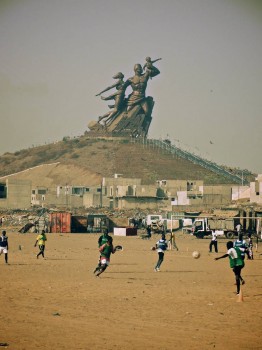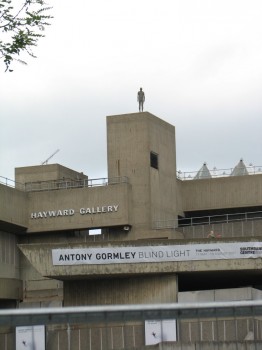We are developing the social individualist meta-context for the future. From the very serious to the extremely frivolous... lets see what is on the mind of the Samizdata people.
Samizdata, derived from Samizdat /n. - a system of clandestine publication of banned literature in the USSR [Russ.,= self-publishing house]
|
My case to receive reparations is just as solid as the case for reparations to be paid to African-Americans by lesser-hyphenated-Americans.
Many members of a group to which I belong by accident of birth were enslaved by the group to which you belong by accident of birth (talking to you, heterogametic oppressors). Don’t waste my time with talk about how the law has given women equal legal status to men for generations now, because we are still poorer than you. Well some of us are poorer than some of you and some of us are richer than some of you, but let me tell you that even if I’m doing fine myself, the thought of people with bodies more like mine being on average poorer than people with bodies less like mine is a profound hurt that can only be assuaged by money.
No, the fact that you personally have never enslaved, beaten or otherwise oppressed a woman is not relevant. Can’t you see this thing is bigger than mere individual morality?
You can stop whingeing about how lots of men in history were oppressed quite as much as women were, or how people of both sexes were oppressed on many grounds other than gender, such as class, religion, nationality and race. I am quite aware of that already and join with all victim-groups in unbreakable solidarity, unless any of the oppressors included my ancestors such as to place me in a paying-out group, in which case the notion of paying reparations for the crimes of one’s ancestors is ridiculous. It is the present – a present in which many women are cruelly oppressed – not the past that matters! (Er, when it comes to us getting the money, that is. When it comes to deciding who pays the money, it’s the situation centuries ago that matters, obviously.)
Anyway, why should an artificial construct like “nationality” or “race” be the factor that determines who gets reparations? Gender, unlike race, can be determined objectively. Make gender the criterion and you will be troubled by very few of those pettifogging legalisms you get with race about how all the mixed ancestry people would have to pay reparations to themselves.
Cease your caterwauling about how your great-grandpa once put half a crown in a suffragette collection box. Obviously guilt can be inherited (by you) but the notion of heritable credit is contrary to reason.
None of your man-splainin’ nonsense about being partially descended from women, either. I’m certainly not going to let myself off from the solemn duty of identifying solely with my own gender just because some of my ancestors were men. See, if I can maintain decent standards of group segregation, so can you.
Do not presume to ask how many generations must go by before your group is to be permitted to cease its duty of unrequited toil (mediated via the tax collector and the Reparations Administration Agency) for the benefit of my group. Be assured that we will let you know when we no longer want your money. Until then, woe to that man by whom the offense cometh. That’s you, that is.
So argues David Codrea, writing at the website of Jews for the Preservation of Firearms Ownership:
President Goodluck Jonathan’s government embraces “gun control,” both as a signatory to the United Nations Arms Trade Treaty, and also as a matter of national policy.
“In Nigeria, the right to private gun ownership is not guaranteed by law,” the GunPolicy.org entry for Nigeria documents. For those not familiar with that resource, it’s a project of the Sydney School of Public Health, and while of decidedly anti-gun bent, nonetheless provides instructive and useful compilations of gun laws from around the globe.
“[C]ivilians are not allowed to possess machine-guns, military rifles and handguns … private possession of semi-automatic assault weapons [and] private possession of handguns (pistols and revolvers) is prohibited,” the site advises. Add to that licensing, background checks and registration for what they are allowed to own, a prohibition on concealed carry and stiff criminal penalties for gun law violations, and Nigeria is one of those places where the “law-abiding” are at extreme disadvantage.
Boko Haram, which doesn’t let such details slow them down a beat, finds such conditions enabling.
Not all are satisfied with the status quo.
“[T]he youth vigilante volunteer group, popularly called the Civilian JTF, has called on the Federal Government to allow its members carry arms and ammunition in order to do its work well in Borno State,” The Nigerian Voice is reporting.
“We used sticks and knives and worked closely with soldiers and fought the Boko Haram members out of Maiduguri,” a spokesman for the group related. “They are now killing civilians in the villages.”
For a sceptical view of the likely efficacy of arming civilian vigilantes to fight Boko Haram, please read Tim Newman‘s comments to my previous post about Boko Haram. He can very reasonably back up his pessimism by saying that he has lived and worked in that part of the world, as I have not. Nonetheless it had not been quite clear to me until just now that arming the people has not yet been tried. Disarming them has. It has not prevented an extremely violent insurgency.
I would so like to believe this video is a sick joke. The grinning idiot, swaying and bobbing around, scratching his bum, fiddling with his little red cock’s-comb topknot or bobble hat or whatever that is, rubbing his thigh while talking about the market for slaves… surely he cannot be real, cannot be serious?
Yet those who ought to know think it really is Abubakar Shekau speaking. And if it is, that is further confirmation that the abducted children have already been raped and enslaved.
Faced with Abubakar Shekau’s statement that he will sell for sexual use girls as young as nine, many of those who are usually firmly of the opinion that interference in foreign quarrels is always an evil rediscover a use for Hellfire missiles.
What should be done? Anything?
At one time Lara Pawson, inspired by the works of Basil Davidson and other British Marxists, lionized Angola’s MPLA as a “radical socialist movement that epitomised the heroism of African liberation”. I received the impression that her faith in radical socialism is diminished but not extinguished. Her faith in the MPLA is quite gone. She writes,“Angola’s brutal history, and the MPLA’s role in it, is a truth that we must tell”:
When I arrived in Luanda, the MPLA had long been – and still is – a member of the Socialist International, an organisation that claims to pursue “progressive politics for a fairer world”. I remember my pleasure on hearing politicians and other members of the urban elite calling each other camarada (comrade). Even the party rhetoric sounded remarkably similar to that of the revolutionary years of the 1970s. But a few months into my new job, when the country’s “fourth war” finally erupted, I could no longer hide from the blindingly obvious: if revolutionary politicians were what I was after, I was at least 20 years too late.
In fact, this was also wrong. I began to discover that the idea of a 1970s MPLA heyday was just as misguided. An Angolan colleague told me about 27 May 1977, the day an MPLA faction rose up against the leadership, and the honeymoon of revolution crashed to a halt. Some called it an attempted coup, but my colleague insisted it was a demonstration that was met with a brutal overreaction.
Whichever story you believe, six senior members of the MPLA were killed that day by supporters of the uprising. In response, President Neto, the politburo and the state media made many highly inflammatory statements that incited extraordinary revenge. In the weeks and months that followed, thousands of people – possibly tens of thousands – were killed. Some of the executions were overseen by Cuban troops sent to Angola by Fidel Castro to repel a South African invasion.
…
But what rattled me was that Angola-watchers on the left – intellectuals whom I admired – all seemed to have turned a blind eye to the thousands of killings. It was as if their commitment to the party was so deep that, in the end, they heard only the voices of its leaders and fell deaf to the calls from below.
That white conservatives also had their moment of disillusion regarding an Angolan liberation movement, when Jonas Savimbi of UNITA allegedly had Tito Chingunji and Wilson dos Santos executed – or when whatever really happened with that bloody business happened – is somewhat better known. The MPLA has escaped similar scrutiny, for the usual reason.
The other day I wrote a post about the plight of the Bushmen living in the Kalahari desert in Bostwana.
Jaded Voluntaryist commented,
Survival International are a bunch of arseholes who would see brown skinned human beings being prevented from rising out of the mud because it’s just so quaint. I wouldn’t take their word for it. Of course that may not be what’s happening here, but they don’t have a great track record.
They moaned for example when the Saint family (at the cost of several lives) brought Christianity to the Huorani tribe in Ecuador, which helped reduce their murder rate down from somewhere in the 70% region. Hardly anyone lived to old age. No one would deny that not everything the Huorani got from contact with the developed world was good, but only a sociopath would want them to keep living as they were.
I replied,
I take your point about the patronising attitude of groups like Survival International, although I have also heard that they sometimes do good work on the ground protecting tribal people from state and other violence. As I am sure you agree, if any particular Bushman wants to carry on as his or her ancestors did, good luck to them, and if he or she wants to head to the relatively bright lights of Gabarone and seek their future there, good luck again.
However it looks very strongly as if the Botswanan government has taken away the option for Bushmen to live in their traditional way by the use of a mixture of force (eviction from their ancestral hunting grounds and the hunting ban) and state “help” (the infantilising effects of welfare as pointed out by Mr Kakelebone).
I may write a post someday about the superiority of the attitude of Christian missionaries towards tribal people compared to the attitude of groups like Survival International towards tribal people. My argument would not be based on the fact that I am a Christian, nor on any general assessment of how much or little I admire the hunter-gatherer lifestyle (which might vary widely between different groups). My argument would be that the missionaries wish to persuade some other human beings to believe as they themselves believe, whereas the “protectors” wish to keep them as living museum exhibits. They always remind me of those science fiction stories in which Earth is kept ignorant / keeps other planets ignorant of faster than light travel and so on. My sympathies are nearly always with those who say, “Screw the Prime Directive”.
Then I said,
Come to think of it, screw the “I might write a post someday”. I will cut and paste the above comment as a post right this minute.
Ten years ago I thought their days might be drawing to a close: Kalahari Bushmen, New Age Travellers and the paradoxes of state welfare
…perhaps their ancient way of life was doomed anyway by contact with modernity, but any slight chance it may have had to either adapt organically or fade away by consent was finished, and its end made more bitter, by government efforts to help.
And so it has proved: Botswana bushmen: ‘If you deny us the right to hunt, you are killing us’
For Jamunda Kakelebone, a 39-year-old bushman, or San, whose family has always lived as hunter gatherers, what is happening in the Kalahari desert is deeply disturbing. Not only have bushmen families like his been moved from their ancestral land to make way for tourists, diamond mining and fracking, he says, but those who remain are now no longer allowed to hunt.
The final blow came in January, when a ban came into effect prohibiting all hunting in the southern African country except on game farms or ranches. The new law – announced by the minister of wildlife, environment and tourism, Tshekedi Khama (brother of the president, Ian Khama) – effectively ends thousands of years of San culture.
…
In a series of evictions after 2002, the Botswana government removed several thousand San from the Kalahari reserve, claiming they were a drain on Botswana’s financial resources and that the families were happy to give up their hunter-gathering. But, say human rights groups like Survival International, the evictions were intended to allow in conservation groups, tourist companies and diamond mining.
Around 350-400 San people now live in seven “settlements” in and outside the game reserve, many of which are in appalling conditions. “Instead of being allowed to hunt, we are taken to resettlement camps and must depend on government for handouts. It’s like holding your arms and expecting to be fed. They treat us as stupid. We are given clothes and food.
The speaker, Jamunda Kakelebone, is pictured with his lawyer outside Clarence House in London. Someone should have warned Mr Kakelebone that some aspects of his message might be ill-received in a land where strong taboos hold sway.
One of the saddest recent facts about the world, and especially the twentieth century world is that the Devil has tended to have the best tunes, the best pictures and the best public sculpture.
By the middle of the twentieth century, World War 2 having been at least partly won by some of the Good Guys, many officially encouraged Artists in the rich West had come to associate all tunefulness and all pictorial or sculptural communicativeness with evil, and to shun artistic communicativeness on purpose. Is this picture telling a story? Does that symphony have lots of tunes? Is this sculpture of something or of someone, and does it speak to the best in us? To hell with that, said many of the more serious and educated sorts of Artists, because such glories reminded them that Artistic glory had just been and was typically then still being used, by Hitler and by Stalin and by their numerous imitators around the globe, to glorify wickedness.
Meanwhile, the horribly numerous and influential supporters within the better bits of the world of the still persisting and Communistic sort of evil went out of their way to encourage these mostly dismal and arid Artistic tendencies, in order to make the best bits of the world seem far more uninspiring than they really were, and hence ripe for conquest by the Communistically evil bits. Artistic glory continued, well into the late twentieth century, when the very worst of the twentieth century’s greatest horrors were politically and economically in retreat, to glorify the dreary and still decidedly evil aftermath of the horrors, in the USSR and in all the places it continued to subjugate or influence, such as in China and nearby despotisms. The rule was, still, that the better the mid-to-late twentieth century place was and the more it was contributing, despite all its corruptions and blunders and disappointments, to the ongoing advance of humanity out of mass poverty and into mass comfort and even mass affluence, the duller and more uninspiring its officially sponsored Art was.
Thank heavens for the less official, small-a art, like advertising and the more commercialised parts of cinema and television, and like pop music. Above all, thank heavens for rock and roll. If Official Art refused to celebrate the escape, in the rich countries, of the poor masses from their poverty, then the enriched paupers would buy electric guitars, form ten million pop groups and celebrate their newly emancipated lives for themselves. The rock-and-rollers didn’t “build this city on rock and roll”. The city was already built. But by God they cheered it up. And this despite all the efforts of Official Art people to make rock and roll dismal too.
These thoughts were provoked by me recently having been steered towards pictures of this, I think, rather splendid piece of public sculpture on a hill in Africa, just outside Dakar, Senegal:

This gigantic and inspiring celebration of human progress and traditional family values was erected by the sculptural propaganda arm of the abominable state of North Korea, that classic after-echo-of-horror relic that still now staggers on into the twenty first century.
To the exact degree that Africa is now starting seriously to shun the follies of North Korean style murder-suicide-statist political-economic policies, Africa is indeed now starting to make some serious economic progress, thanks to things like free trade, mass literacy and mobile phones. Well fed African go-getters with adoring wives and happily well fed babies are now multiplying across the continent, busily exploiting the potential of such things as mobile phones to stir up affluence, for others as well as for themselves, perhaps some of them even inspired in their capitalistic endeavours by sculptures like the one above.
I personally believe that the famously colourful and inspiring Chinese posters that were among the very few pleasing things created during the otherwise wholly dreadful and destructive Mao-Tse-Tung era in China may have had a similarly inspiring impact upon China’s subsequent generation of capitalistic go-getters. Communists had a minus quantity of knowledge about how to create the good life, but they at least had a clue about what the good life looked like and felt like, and got other and less crazed persons thinking about how actually to contrive it.
Meanwhile, public sculpture in the old rich parts of the world has, for some time now, been on the up and up, or so I think. It may not be gloriously inspiring, but at least it has started to be – has for some time actually been, I think, some of it – fun, at least quite often. Official Art still can’t quite bring itself to be as brashly optimistic about humanity and its future as those North Koreans, but at least the baleful representation-equals-Hitler-and-Stalin equation is sinking into the cultural history books. Good riddance.
Personally, and in company with many other people who are not usually very attracted by or admiring of contemporary Art, I particularly like the works of Antony Gormley. There was recently a show about Gormley on BBC4 TV, which illustrated only too vividly that Gormley emits the same drone of vacuous and pretentious Art-Speak nonsense that most other Artists seem to. The contrast between the educated verbal gropings that Gormley talked on TV last night with the down-to-earth clarity achieved by the comic book artist Frank Quitely, who starred in an earlier BBC4 show in the same series, was extreme (see my remarks above about the redemptively inspirational contribution of popular art to Art). But ever since Gormley stumbled into popular acclaim with his Angel of the North, which proved a whole lot more inspiring to the wider public than he probably thought it would, he has specialised in doing public sculpture that is of something (typically his own very average naked body but never mind), and which many people, me included, often enjoy looking at. His actual work is, I think, as often as not, brilliantly eloquent, and he is now finding it easier to do it, what with the new technology of 3D computer scanning and visualisation and 3D printing. Gormley’s actual Art makes me want to say, not so much that his spoken words are silly (even his sculpture titles tend to be Art-Speak meaninglessness), but that words are just not Gormley’s thing.
I still remember fondly the time in London, in the summer of 2007, when the dreary concrete of London’s South Bank Arts district and nearby parts was invaded by a small army of naked metallic Gormleys. The many identical Gormleys were not, in themselves, especially inspiring. But look on the bright side. Nor were these Gormleys bent-out-of-shape semi-abstract grotesques, mid-twentieth-century style. And although in themselves ordinary, the Gormleys were often standing in very interesting and inspirational places, high above the streets, up on the roofs of tall buildings:

Stick anyone on a pedestal – in general, look up at them – and they look more impressive. They look like they deserve to be looked up to. This positioning of all those South Bank Gormleys suggested (yes yes, to me – I admit that all this is very personal) ordinary men at least looking, very admirably, towards less ordinary and more inspiring far horizons. Some of the Gormleys were looking downwards, but most were looking out ahead. What all these Gormleys were not doing was just standing in Art galleries, staring miserably at their own feet, with signs next to them full of demoralising Art-Speak drivel. They raised the spirits of almost all of those who gazed up at them. Only those Art People who hated what a popular hit the Gormleys were and who still want Art to just moan about the horrors of capitalist consumerism, instead of actually making a positive contribution to this excellent trend in human affairs, were seriously offended by all these Gormleys, which for me is of course just another reason to love them and to treasure the memory of them. I and most other Londoners and visitors to London who saw them regretted only the moment when they migrated elsewhere.
If and when the ghastly government of North Korea is overtaken by the collapse that in a wholly just world would immediately engulf it, I wonder what will happen to these North Korean sculptors. I now like to conjecture that, despite all the barbarism that they now go through the motions of glorifying, they might yet have some kind of civilised future, glorifying people and things that truly deserve to be glorified.
Well, for all his Marxist ideology, collectivist ruination of Zimbabwe’s once-strong agriculture sector and destruction of its currency, it appears that only the best of capitalist medicine will do for the bastard:
HARARE (Reuters) – President Robert Mugabe is in Singapore for an eye operation ahead of his 90th birthday on Friday, a spokesman said, maintaining a government denial that Zimbabwe’s long-serving ruler is suffering from prostate cancer.
George Charamba said Mugabe, Africa’s oldest president, left Harare on Monday and would be back in the country for birthday celebrations on Saturday.
“This is a routine check-up, a routine cataract operation for his left eye whose date was set down more than a year ago and the president has gone out to fulfil that appointment,” Charamba told Reuters on Tuesday.
“There is nothing more than that, nothing serious” he said, dismissing speculation that Mugabe is struggling with his health. “He had a right eye operation a couple of years ago and he is going to have the other attended to now.”
So if it is a routine matter, why does this man have to fly thousands of miles, churning out all that carbon, which as we know, is causing the planet to get so much warmer (stop the sarcasm, Ed.)?
Or maybe the fellow wants to do a bit of shopping down in Orchard Road?
It is a routine complaint about modern life that “we” now have far too many gadgets for our own good, and maybe some of us do. (I just googled too many gadgets and got “about 150,000,000 results”.)
But then again, have a read of this, by blogger “6000”, who now lives in South Africa, about his last conversation with his beloved uncle Alan, who died yesterday in a hospital in the Isle of Man:
My brother had been over to see him on Saturday and while I wish that I could have been there too, I enjoyed a 20 minute conversation with him over Skype. My last memory of my Uncle Alan will be his disbelief at the technology in front of him as I showed him Cape Agulhas lighthouse and the turquoise Indian Ocean. He always loved anything to do with the sea. We even shared a joke or two. It might not have been the same as actually being there with him, but for me, it was a special moment – even more so now – and I hope that for him, it was a bit of escapism from his hospital bed.
The way to judge the value and impact of a new technology is not to look at the typical or average uses of it, but at its most meaningful and significant uses. Yes, modern toys are routinely used to exchange trivial chit-chat of no great significance. But so what? Where’s the harm in that? Even supposedly insignificant chat often means something very significant to those doing the chatting, even if some nosy eavesdropper with nothing better to do than moan about other people’s conversations might not be so diverted by it. I imagine that if you had been listening in on 6000 and his uncle last Saturday, you might not have been that amused. Like I say: so what?
And nor should “we” be badgered into looking only at the bad things that new technology can do, or help people to do. Yes, some of the newly enabled chit-chat is significant because it is malevolent. Modern toys are indeed used to do bad things, and to conspire to do other bad things. And airplanes incinerated cities. Cars have long been used to make getaways after bank robberies. Trains took innocent people to murder camps and soldiers to be slaughtered in wars. Sailing ships were used by pirates. Money gets stolen, and is then used to finance other crimes.
But are the facts in the above paragraph convincing arguments against the very existence of laptop computers, Skype, smartphones, airplanes, cars, trains, sailing ships or money? No. The good done by new technology when used by good people to do good things is by far its most significant consequence. Long may this continue to be true.
For the last hour as of 13.34 GMT, the Guardian has been running what it calls an ‘eco audit” asking readers to give their views on whether the destruction of ivory stocks helps save elephants as a species.
I was pleased and surprised to see comments running strongly in favour of the answer ‘no’. The first comment is typical:
It’s a stupid move. It just makes the price of contraband ivory go up and kills more elephants.
Equally annoying has been the whitewashing of [Mandela’s] history. He was given a fair trial and a fair sentence, even Amnesty fucking International said so. He WAS a terrorist.
He was also a politician upon release, who had some good ideas and equally, some fucking insane ones. Ironically, he replaced a notionally democratic but really one party state with another notionally democratic but really one party state, although to be fair, this was hardly his fault.
– Obnoxio the Clown
“Mandela was a great man. The obvious reason was his courage and persistence in fighting against Apartheid. The somewhat less-obvious reason was his willingness to forgive. I’m assuming, of course, that the movie Invictus was relatively accurate in that respect. I remember sitting through the movie and being on the edge of tears for almost the whole movie, so moved was I by his willingness to forgive. A little bonus: His favorite poem, “Invictus,” has been my favorite poem since middle school. In some ways just as impressive, if not more so, was his willingness to learn at a relatively old age. He was a long-time socialist but, by the time he got out of prison, much of the world had learned that socialism didn’t work. He became persuaded of that and, although, as president of South Africa, he expanded the welfare state, he did not make a large move in the direction of socialism. His willingness to reject his wife Winnie’s violent ways was also impressive.”
– David Henderson.
I am sure there will be lots of appraisals of his life in the days and years to come; I have seen a few, mostly respectful (and one or two that are less so). As far as I can tell, Henderson’s is about the most accurate I have seen so far, for it focuses on essentials. A great man indeed. May he rest in peace.
|
Who Are We? The Samizdata people are a bunch of sinister and heavily armed globalist illuminati who seek to infect the entire world with the values of personal liberty and several property. Amongst our many crimes is a sense of humour and the intermittent use of British spelling.
We are also a varied group made up of social individualists, classical liberals, whigs, libertarians, extropians, futurists, ‘Porcupines’, Karl Popper fetishists, recovering neo-conservatives, crazed Ayn Rand worshipers, over-caffeinated Virginia Postrel devotees, witty Frédéric Bastiat wannabes, cypherpunks, minarchists, kritarchists and wild-eyed anarcho-capitalists from Britain, North America, Australia and Europe.
|





